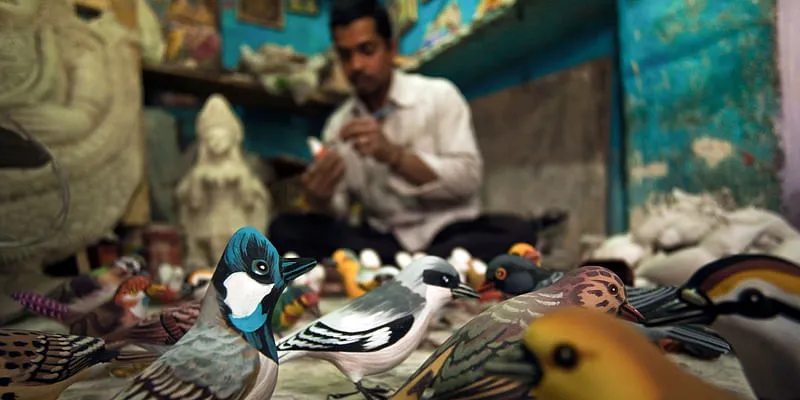How this blogging site became one of the most sought after artisanal online brands
Gaatha started its journey in 2009 as a blogging site to recognise the artisans of India. Today, the brand supports more than 250 artisans and showcases more than 350 artforms across 30 categories on its platform.
The journey of - a handcrafted online store, which started to recognise the faceless artisans of the world, is an epitome of how things change for the better and guides us to a certain path.
Started as a blogging site to make people aware of the rich art and craft of the country, designing enthusiasts Sumiran Pandya, Himanshu Khatri, and Shivani Dhar began writing about different artforms and handlooms on their web portal Gaatha in 2009.
What started as a move to tell the world about the Indian art and craft heritage, today Gaatha has become one of the most sought after online stores for people to shop for Indian artisanal products. The brand makes available over 350 art forms across 30 categories to its customers and supports around 250 artisans.
In an interaction with SMBStory, Sumiran talks about the journey of Gaatha, the arts and crafts of India, and how they are doing their bit to support the artisanal community.
The tale of Gaatha
Alumni of the National Institute of Design (NID), Ahmedabad the co-founders, since the beginning of their college journey, were learning about age-old art and designs, and that’s when they developed a soft corner for the artisans who have been keeping alive their centuries-old art forms, but still suffering to get their piece of recognition.
“All three of us had a flair for designing, and to explore the masterpieces of art, we travelled across the country in 2009. We had read a lot about different art forms but the story of the makers of these art was never up there. After we met the artists, we started writing blogs to bring out the stories of unknown people behind the Indian art heritage,” Sumiran tells SMBStory.
Once they started publishing content, they started getting queries about different products, about the artisans, and how those readers could buy the products. This happened for almost two years, and by late 2012, the partners decided to set up an online shop and make the beautiful art pieces available for customers.
Gaatha’s online shop portal started out by listing around 700-800 products, including apparel, kitchenware, and personal utility products like wooden combs. Soon, the website started getting more traction and Sumiran along with the co-founders decided to start a full-fledged business in 2013.
Sumiran says that NID incubated them initially with Rs 4 lakh, and they also invested their personal earnings, which they had received from working on various designing projects.
Since its inception, Gaatha has been working on a revenue-sharing model where Sumiran says the company keeps a 25 percent margin on sales and 75 percent is given to the artisan.
Gaatha also has a parallel revenue stream, wherein it lists products from other artisanal brands on its website.

An artisan making home decor products for Gaatha
The disrupted artisanal market
Talking about the Indian handicraft industry, Sumiran says, the time has changed and there’s a lot of recognition given to artisans, especially after the COVID-19 outbreak. However, when they started out, there was hardly any platform that was talking about them.
Even after the founders entered the business full time, they didn’t stop spreading the word about the artisanal community. Even today, they have a separate portal called gaatha.org where they have created a catalogue of artforms, their history, origin, and more.
On average, Sumiran says they receive around 600 orders per month. But even though Gaatha has been in the industry for over a decade, the brand is now facing tough competition from its peers like Jaypore, Okhai, The Indian Ethnic Co, and others.
“You see, the pandemic did make artisans suffer for a short while, but it also helped them grow in that tough phase. People found this untapped opportunity worth exploring and you can see that the lockdowns gave a big push to artisanal brands, and welcomed new entrants. But this also posed a challenge as there are a lot of duplicate products,” Sumiran says.
Sumiran claims that Gaatha has never spent even an average of Rs 50,000 per month in marketing and relies mostly on organic sales. He says, “We know that even if it means slow growth, we will grow organically. We have seen our peers spending lakhs in marketing, but the day they stop burning money, the incoming orders get restricted. We are in a safe zone in this regard.”
But Sumiran also says that surviving business with a lean margin has been tough and the pandemic added to the woes initially when every other artisan set up a shop on the internet and sold these authentic handmade products at throwaway prices.
“The artisans do not have retail knowledge at all and the pandemic forced them to sell off their inventory given the threat of lockdowns, and this paved a lot of challenges and we are still fighting through it.”

Artisans making Jhabua dolls for Gaatha
Keep traditional art forms alive
The immediate way forward for Gaatha is to scale up and bring in more art forms from the nooks and crannies of the country. Sumiran also says that they are on the lookout for a strategic partnership, which could help them in scaling up, but working along with the ethics and culture they have established at Gaatha.
“We want to keep the artforms alive and this cannot happen if we are dictated on our way forward. We need someone who can share the same value as we do,” Sumiran says.
Edited by Megha Reddy









